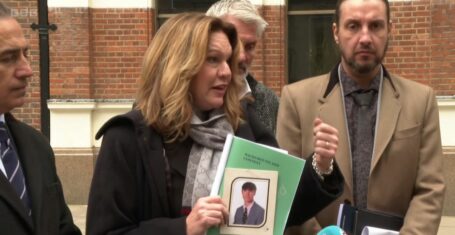
A British Museum exhibition about ancient Iraq is coming to Nottingham
It will be open for three months at Lakeside Arts
An British Museum exhibition that showcases 80 objects from ancient Iraq will be coming to Djanogly Arts Gallery this spring.
The gallery, located within the Lakeside Arts complex, will host the exhibit Ancient Iraq: New Discoveries between 26th March and 19th June 2022.
This touring exhibition has been put together by curators at the British Museum and the objects featured within it are from the museum itself.
The exhibition will display a variety of incredible objects that both Nottingham’s university students and the general public alike are able to see.
The objects include a clay face of the demon ‘Humbaba’ who is the antagonist in the infamous Mesopotamian text The Epic of Gilgamesh. A 4,000-year-old dolerite statue of King Gudea, a man who once ruled the state of Lagash in Southern Mesopotamia, is also featured.

Face of the Demon Humbaba; fired clay; Abu Haba, Iraq; 1800 – 1600BC
© The Trustees of the British Museum
Mesopotamia is the name given to a historical stretch of land in Western Asia. Part of this region now makes up modern-day Iraq.
Shona Powell, director of Lakeside Arts, told The Tab Notts that she’s excited for people to gain insights into this historical region and its inhabitants through this exhibition: “We’re looking forward to learning more about this ancient civilisation which has gifted us so much that we take for granted today including schools, writing, crop irrigation and the wheel.
“The University of Nottingham museum based at Lakeside Arts has a longstanding partnership with the British Museum”.
This relationship has led to this opportunity for people in the local area to witness these objects.

Statue of King Gudea; dolerite; Tello, Iraq; 2130BC
© The Trustees of the British Museum
Nancy Highcock, one of the British Museum-based curators of Ancient Iraq: New Discoveries, also mentions this relationship to The Tab Notts: “We felt that the Djanogly Art Gallery in Nottingham put forward a very impressive proposal for how they would include community engagement for the exhibition,” she explains.
“As part of the British Museum’s National Programmes, we try to get our objects out as widely as possible and we felt that Nottingham was the ideal place for this.”
Nancy also shares her hopes for the exhibit, she said: “I hope that by engaging closely with the objects, some of which are being exhibited outside of London for the first time, visitors will get a sense of the technological and artistic brilliance, as well as the cosmopolitan character, of the people living in ancient Iraq.

Visitors to the British Museum exploring one of its galleries on Mesopotamia
“Objects from the Royal Cemetery of Ur, for example, are not only beautiful and expertly crafted, but are made from materials demonstrating far-reaching connections with Central and South Asia already in the 3rd millennium BC. Other objects in the exhibition illustrate the cultural exchanges of ancient Mesopotamians, Greeks, Persians and Romans nearly two millennia later.
“I want visitors to come away with the understanding that the ancient Middle East, like today, was a multicultural and dynamic region.”
Ancient Iraq: New Discoveries at Djanogly Art Gallery will have free admission when it opens later this month. It will be available to visit every day of the week except for Mondays.
Related articles recommended by this author:
• In honour of International Women’s Day, meet the influential women of UoN and NTU
• Breaking: University of Nottingham to face a further five days of strikes before Easter
• UoN releases statement in support of Ukraine
All photos courtesy of The Trustees of the British Museum.









































